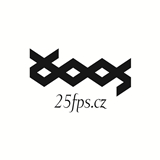Red Westerns Strike Again
Red Westerns Strike Again
We all know what a Western is. We’ve probably seen countless American Westerns, know about the Italian Spaghetti Westerns and might even be familiar with the Gazpacho Westerns from Spain. But Red Westerns, Easterns, or Sauerkraut Westerns are mostly less known – or even unknown. And that’s a pity. This special programme is your chance to see some of the films that officially carry one of these banners. We decided to put them all under one common umbrella: Red Westerns.
If one starts looking in academic literature for these terms, one can find some simple explanations: ‘Red Westerns’ are Westerns made during Soviet times; they form the communist answer to the American Western – a ‘decadent’ genre that was perceived as the embodiment of ruthless capitalism. ‘Easterns’ are Westerns made in Eastern Europe, and ‘Sauerkraut Westerns’ are Westerns made in the former GDR (German Democratic Republic). There are even more versions and terms. Needless to say, all of them were politically tinted and their makers were actually forced by the communist authorities to employ the ‘right’ heroes and enemies. Their main goal was to attract and amuse large audiences by using the generic conventions of action and Western films. The history of this phenomenon has its own phases and ups and downs, but I shall leave it to film scholars to analyse and identify them. The mission to create something very popular in the gray times of the so-called socialist-realism genre was certainly fulfilled. The Soviet Red Westerns were enormously popular in their own region and gained millions of viewers, especially in the 1960s and 1970s. But the genre also crossed the Soviet borders and re-emerged in its specific version in the various countries of Eastern Europe.
Along with our own official version of the Western, we, the generations of happy communist youth, were even allowed to see some true American Westerns! The choice of the censors was not always clear to us, but one of the greatest Westerns imported to both the Soviet Union and Eastern Europe was John Sturges’ The Magnificent Seven (1960). This was during the 60s, and we should bear in mind that it must have been a result of the political thaw, especially in Czechoslovakia were I was growing up. Shortly after, another cult film appeared in my country, the unforgettable Czechoslovakian film Lemonade Joe (1964). This was a very atypical Western, actually a parody of it, with famous actors and great sixties music. These two films were and still are repeated on national TV in both of the (now separated) republics and left a lasting impression, a shared cultural consciousness. For instance, one should not be surprised to come across people from both the Czech and Slovak republics who still can quote verbatim from Lemonade Joe.
Growing up as I did with the idea that this film was ‘ours’ and only very popular at home in Czechoslovakia, it really took me by surprise when some years ago I heard the Russian film critic Sergey Lavrentyev talk about its great popularity in the USSR. That said, we started to dig up further memories: the Serbian athlete Gojko Mitic and his representation of American Indians in the ‘Indianerfilme’ from East Germany (but mostly shot in Yugoslavia); West German adaptations of the Karl May books about Winnetou and Old Shatterhand; and the Soviet Westerns. Lavrentyev unveiled a new territory of film culture for me, and I was eager to see those entirely forgotten genre films from the USSR, some of whom I heard about for the first time.
But how? The best solution would be to compile a special programme. Easier said than done. We forgot about it for a few years. Until I came across Sergey Lavrentyev at a festival two years ago, and he passed me a white book with on its cover a bleak blackand-white photo of a Soviet cowboy, a handsome man with a cowboy hat and a pistol in his hand (Nikita Mikhalkov in his directorial debut At Home Among Strangers, a Stranger at Home). I had a look and read in Russian: Krasnyj Western (Red Western). So he did it! Sergey made his dream come true and put all his Red Western memories in this book.
When I presented the idea of making a special Red Western programme to my colleagues at the International Film Festival Rotterdam, their reaction was almost as enthusiastic as mine was a few years ago, when I (re)discovered the film memories I had in common with Sergey Lavrentyev. The Red Western programme idea was born; we made a selection of films and then came the time to find the existing prints of those beautiful, but largely forgotten films. Honestly, I had no idea what lay ahead of me… It is one thing is to select films on paper; another to find the prints in the labyrinth of the post-Soviet anarchy of non-existing prints or copyright holders of some of the ex-Soviet Republic films. Of course they do exist in the treasuries of the Gosfilmofond, but nobody could give us the right key to open the doors of that colossal institution. With a little bit of luck and a little bit of good will, four new prints were especially made for us by the Mosfilm Studio in Moscow. The rest of the Soviet masterpieces had to be imported from various countries of the world, and some are dubbed in English or German.
The films in our Red Western programme are based on memories and talks with colleagues. We selected the best titles and/or those films that were enormous national hits. We hope this selection will give you an idea about the times that we (and the directors) lived in. I am very happy to share these wonderful cinematographic memories with you.
Ludmila Cvikova













Napsat komentář